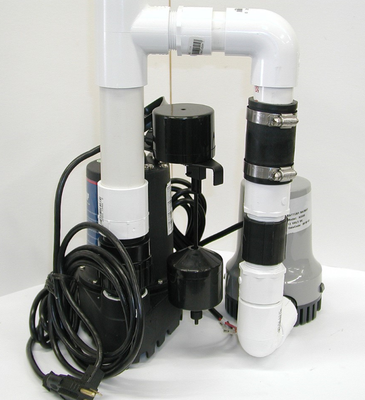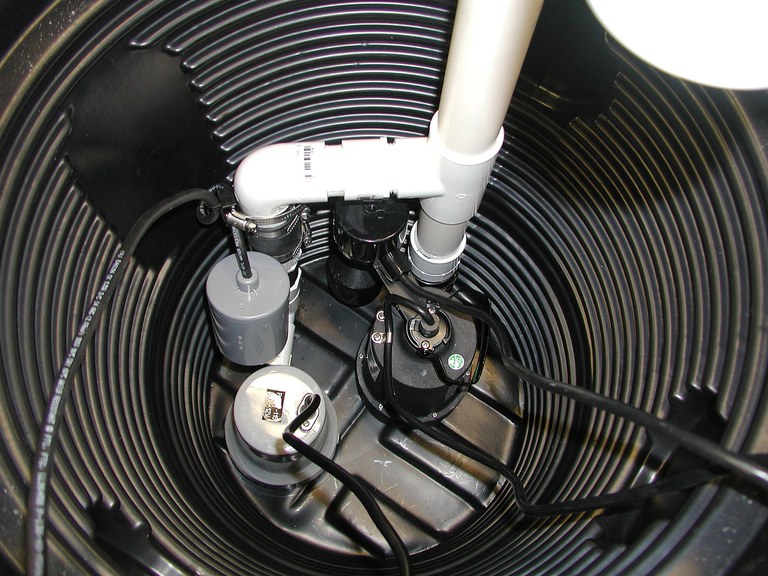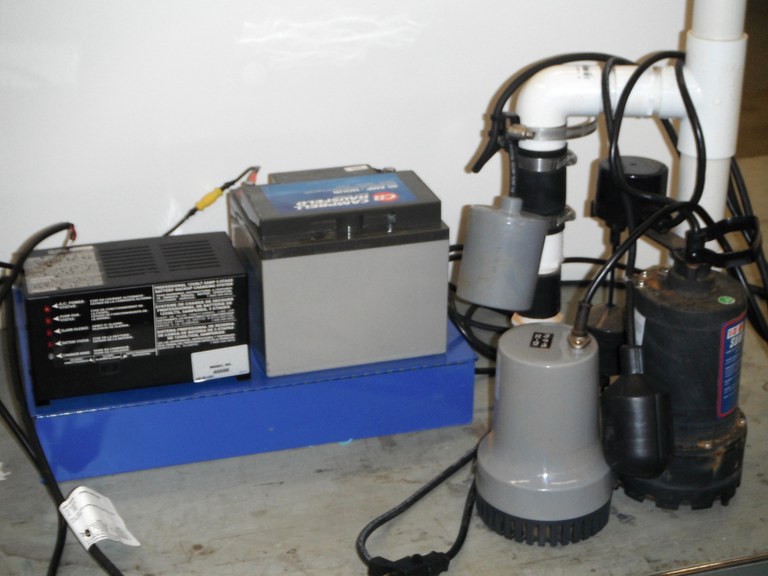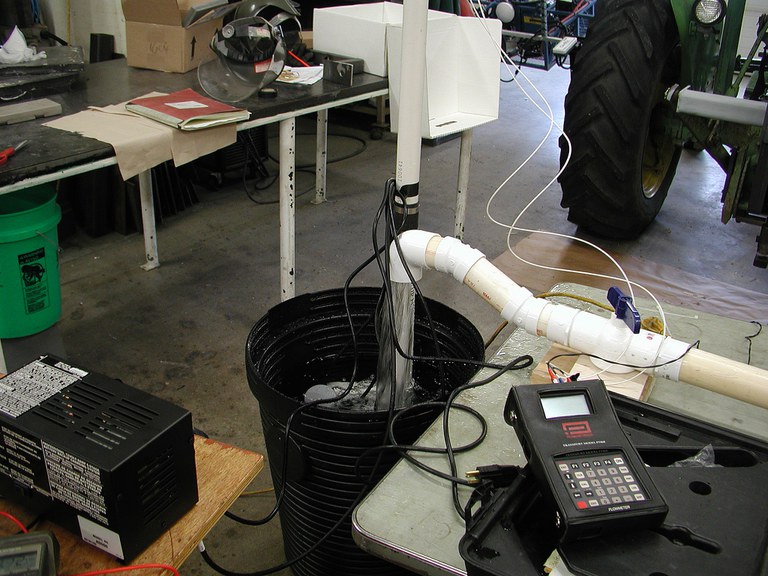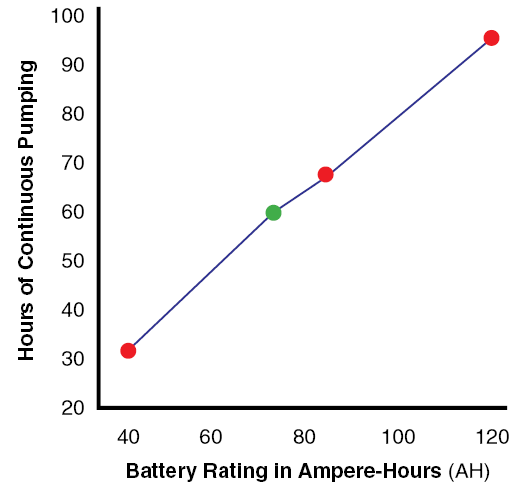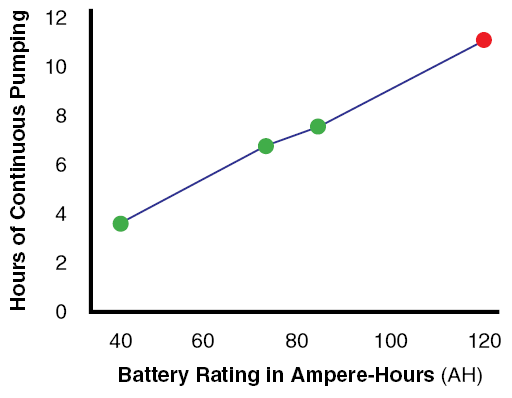A question often asked is: “How long will the backup pump provide protection?” To answer this question, we created a test setup that mimicked a common sump pump installation in a home. The vertical lift from the pump to the discharge was about 10 feet through a 2-inch-diameter discharge pipe. Figure 8 shows the two pumps when water is flowing into the sump. Figure 8. Backup pump test stand showing water flowing into sump that contains the two pumps. The charger is in the lower left and on the right is the ultrasonic flow meter used to measure the flow rate.
Figure 8. Backup pump test stand showing water flowing into sump that contains the two pumps. The charger is in the lower left and on the right is the ultrasonic flow meter used to measure the flow rate.
Figure 9. The duration of continuous pumping by a backup sump pump based on the rated AH of the battery. The 120 AH point is estimated.
The three conditions we tested were:
1. For continuous operation: How many hours of protection will a battery with a certain AH rating provide if the pump runs continuously?
This is the worst-case scenario and it means a lot of water is entering the tile system.
To answer this question we tested three 12-volt sealed lead-acid batteries rated at 40, 75 and 84 ampere-hours. For each test, the batteries were fully charged, power was removed from the primary pump and the charger was turned off. The water flow was adjusted to match the flow rate of the pump. The flow rate of the backup pump was about 14 gallons per minute with a fully charged battery.
We let the pump run continuously until it stopped pumping water. At the start of each test, the battery voltage was about 12.7 VDC (voltage in direct current circuit), and the current draw while the pump was operating was about 10 amps. The voltage and current decreased during the tests.
As shown in Figure 9, a 40-AH battery will provide less than four hours of continuous pumping before water enters the basement, whereas a battery rated at 120 AH will provide about 11 hours of protection. The 120 AH battery response (red marker) was estimated using the linear relationship of the other three points. Thus, the answer to question one would be to purchase a battery with the highest AH rating recommended by the manufacturer or that provides protection for the number of hours restoring power in your area commonly takes.
2. For intermittent operation: How many hours of protection will a battery with a certain AH rating provide if the pump runs every four minutes?
This is a common scenario for many homeowners during heavy rain or flooding events.
To answer this question, we only tested the 75-AH battery. Between the on/off float levels, the volume in the sump was about 6 gallons. The flow into the sump was adjusted to approximately 1.5 gallons per minute (gpm), so the pump ran every four minutes for about 30 seconds.
At the start of the test, the battery voltage was about 12.7 volts (under load) and the pump flow rate was about 14 gpm. We found that the battery had time to recover some voltage between pumping events.
After 60 hours of operation, the battery voltage dropped to about 10 volts and the pump flow rate was about 9 gpm. Although the pump was running, flow stopped within 30 minutes because it could not overcome the 10 feet of vertical lift. Thus, the 75-AH-rated battery provided at least 60 hours of basement water protection starting with a fully charged battery.
Based on this pumping test, we assumed a proportional response based on the battery AH rating. Thus the 40-AH battery will provide about 32 hours, the 84-AH battery about 68 hours and a 120-AH battery about 96 hours of basement water protection (Figure 10).
During many large rain or flooding events, the sump pump might run continuously for a couple of hours, but then the duration between pumping cycles would increase as the flow into the sump decreases.
3. Primary pump failure: How long will the backup pump operate?
In a situation in which the primary sump pump fails but utility power still is available, the backup pump will run for many days because the charger will maintain optimum battery voltage between pumping events.
Figure 10. The hours of operation of a backup sump pump running every four minutes based on the rated AH of the battery. The red markers are estimated assuming a linear response.


